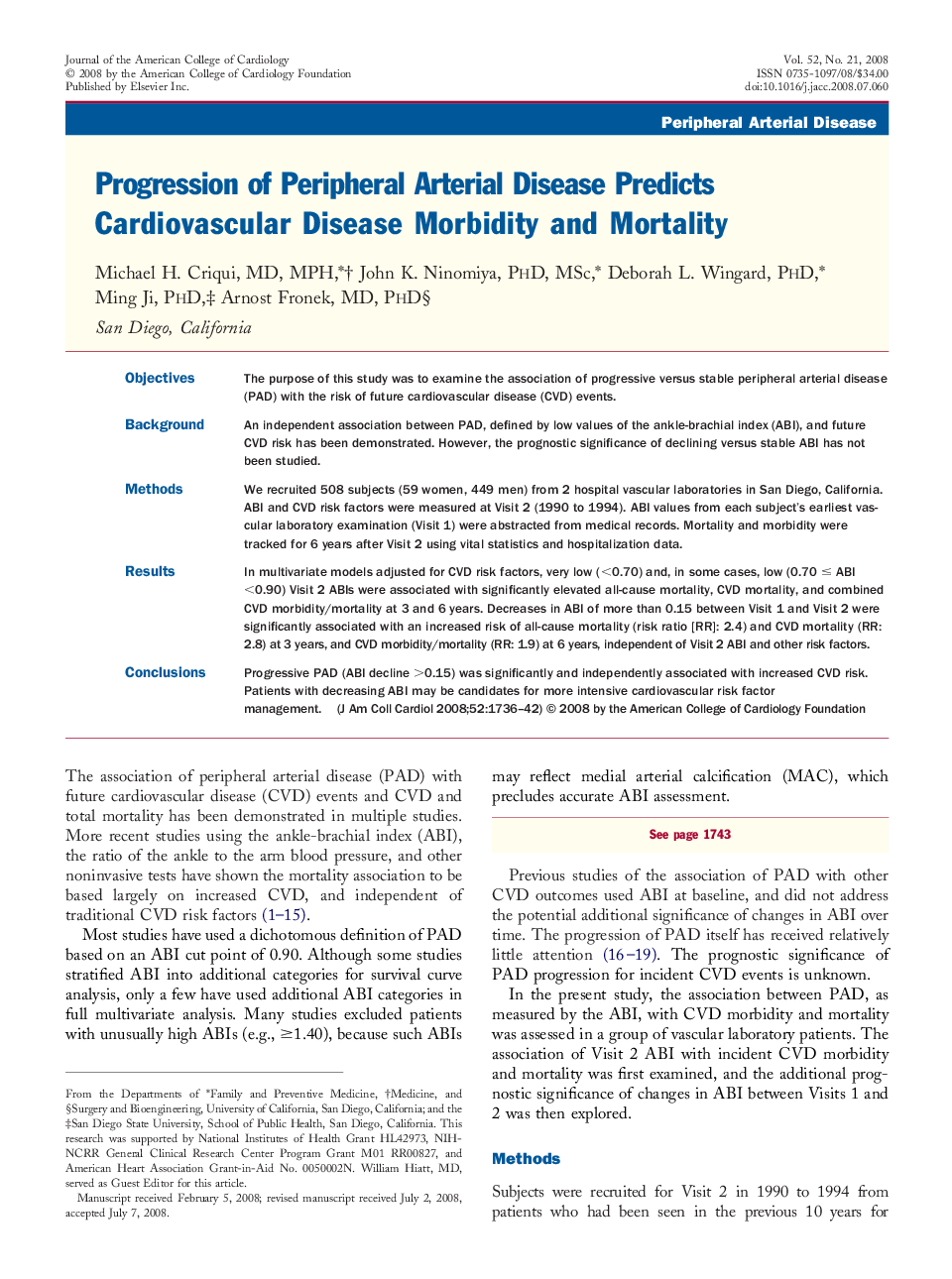| Article ID | Journal | Published Year | Pages | File Type |
|---|---|---|---|---|
| 2951932 | Journal of the American College of Cardiology | 2008 | 7 Pages |
ObjectivesThe purpose of this study was to examine the association of progressive versus stable peripheral arterial disease (PAD) with the risk of future cardiovascular disease (CVD) events.BackgroundAn independent association between PAD, defined by low values of the ankle-brachial index (ABI), and future CVD risk has been demonstrated. However, the prognostic significance of declining versus stable ABI has not been studied.MethodsWe recruited 508 subjects (59 women, 449 men) from 2 hospital vascular laboratories in San Diego, California. ABI and CVD risk factors were measured at Visit 2 (1990 to 1994). ABI values from each subject's earliest vascular laboratory examination (Visit 1) were abstracted from medical records. Mortality and morbidity were tracked for 6 years after Visit 2 using vital statistics and hospitalization data.ResultsIn multivariate models adjusted for CVD risk factors, very low (<0.70) and, in some cases, low (0.70 ≤ ABI <0.90) Visit 2 ABIs were associated with significantly elevated all-cause mortality, CVD mortality, and combined CVD morbidity/mortality at 3 and 6 years. Decreases in ABI of more than 0.15 between Visit 1 and Visit 2 were significantly associated with an increased risk of all-cause mortality (risk ratio [RR]: 2.4) and CVD mortality (RR: 2.8) at 3 years, and CVD morbidity/mortality (RR: 1.9) at 6 years, independent of Visit 2 ABI and other risk factors.ConclusionsProgressive PAD (ABI decline >0.15) was significantly and independently associated with increased CVD risk. Patients with decreasing ABI may be candidates for more intensive cardiovascular risk factor management.
